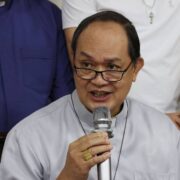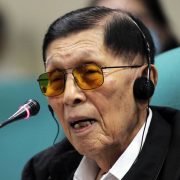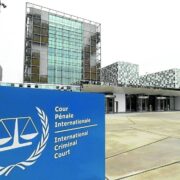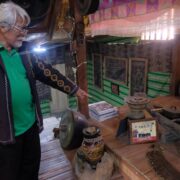Looking beyond July 4

With a height of 45.72 meters, the “Independence Flagpole,” fronting the Rizal Monument in Luneta, is the tallest in the Philippines. Twice a year, on June 12 and Dec. 30, a huge and impressive flag flies proudly on this flagpole. Due to its size and material, this flag moves gravely and gracefully, far better than any computer-generated meme that flashes on your smartphone on June 12. I used to take the flag for granted until I learned about the men and women who died for it in the struggles for independence. It is not well-known that from 1907 to 1919, the US colonial government prohibited the display of the Philippine flag or anything that made reference to it. The flag many people see but do not notice today was to an earlier generation, a reminder of the Philippine Revolution against Spain, the stillborn Philippine Republic, and the Philippine-American War. Red, white, blue, the yellow sun, and three stars were seen as a challenge to the American occupation of the Philippines.
As a boy, I was taught to show reverence for the flag. We were taught how to raise it, lower it, and even how to fold a rectangular piece of cloth into a triangle. This piece of cloth was so sacred that it was not allowed to touch the ground. When the flag was faded or tattered, it had to be replaced with a new one, while the old one was burned and its ashes buried in the ground. In the last century, flags were made of combustible cotton. Today, flags are made of synthetic material, are not biodegradable, and are a health hazard when burned. Our flag law has to be amended regarding incineration: Do we require that all flags be made of cloth, or do we prescribe a clean way to dispose of synthetic or plastic flags?
Each time I look at a flag, I remember a friend who witnessed Independence Day in Luneta in 1946. He narrated how he felt as the US flag was lowered, and how happy he felt to see our flag being raised to fly alone on a flagpole. When I hear people babbling about the Philippines “granted” or “gaining” independence on July 4, 1946, I refer them to Proclamation 2695, issued by the late US President Harry S. Truman, which provides the basis for the half-century US occupation of the archipelago:
“The United States of America by the Treaty of Peace with Spain of Dec. 10, 1898, commonly known as the Treaty of Paris, and by the Treaty with Spain of Nov. 7, 1900, did acquire sovereignty over the Philippines, and by the Convention of Jan. 2, 1930, with Great Britain did delimit the boundary between the Philippine Archipelago and the State of North Borneo.”
This proclamation also declares that “the people of the Philippines have clearly demonstrated their capacity for self-government.”
The US withdrawal then concludes with the words: “On behalf of the United States of America, I do hereby recognize the independence of the Philippines as a separate and self-governing nation and acknowledge the authority and control over the same of the government instituted by the people thereof, under the constitution now in force.” I guess the word “recognize” is the precise legal term to use in this case, but then it could also be taken as a belated acknowledgment of the Declaration of Philippine Independence made on the window of Emilio Aguinaldo’s Kawit home on June 12, 1898. When asked to comment on the events of July 4, 1946, Aguinaldo is quoted to have said: “The US merely returned the freedom we had won for ourselves in 1898.”
Going beyond the events of July 4, 1946, this day reminds me of the mountain of primary source material waiting to be read and processed by Filipinos at the University of Michigan. I first dipped into their archives in 2000, thanks to a Fulbright Senior Research Fellowship, and again in 2023, when I was a visiting professor at the Center for Southeast Asian Studies. Now I know how Alice felt when she fell into the rabbit hole that led to Wonderland. The major figures who jump out of the archives are: Joseph B. Steere, Dean C. Worcester, Harry Bandholtz, George Arthur Malcolm, Joseph Ralston Hayden, Frank Murphy, Homer Ferguson, and G. Mennen Williams.
Steere was a UM zoology professor who visited the Philippines in 1874, that’s two years after the execution of Gomburza. He visited again in 1887, the year Rizal’s “Noli me Tangere” saw print in Berlin. On this trip, Steere was accompanied by Worcester, who later served on the First Philippine Commission and later as Interior Secretary and head of Public Instruction. It was he who was alluded to in the 1908 El Renacimiento editorial “Aves de Rapiña (Birds of Prey)” that led to a landmark libel case. Bandholtz was head of the Philippine Constabulary, who was friendly to a rising young politician named Manuel Luis Quezon. Malcolm was an influential jurist for whom Malcolm Hall in University of the Philippines is named. Murphy was governor-general and Hayden was vice governor-general. Ferguson and Williams were US ambassadors to the Philippines.
Let’s look beyond July 4 at the “Michigan Men,” who are more than footnotes in our history—their lives and times made Philippine history.
—————-
Comments are welcome at aocampo@ateneo.edu
Ambeth is a Public Historian whose research covers 19th century Philippines: its art, culture, and the people who figure in the birth of the nation. Professor and former Chair, Department of History, Ateneo de Manila University, he writes a widely-read editorial page column for the Philippine Daily Inquirer, and has published over 30 books—the most recent being: Martial Law: Looking Back 15 (Anvil, 2021) and Yaman: History and Heritage in Philippine Money (Bangko Sentral ng Pilipinas, 2021).


















Like building Lego in the age of ‘AI slop’